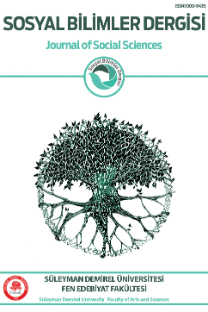Mind Reading and Cognitive Distortion in Jane Austen’s Persuasion
: Cognitive Narratology, Mind Reading, Cognitive Distortion, Persuasion, Jane Austen
___
- Alexander, Michael (2000). A History of English Literature. London, MacMillan Press. Austen, Jane (2008). Emma. Oxford, Oxford University Press.__________ (2004). Persuasion. Oxford, Oxford University Press.__________ (2003). Pride and Prejudice. London, Bantam Press.Booth, Wayne C. (1983). The rhetoric of fiction. Chicago, Univ. of Chicago Press.Leavis, F. R. (2011). The Great Tradition: George Eliot, Henry James, Joseph Conrad. London, Chatto & Windus.Nayebpour, Karam (2017). “The Training Impact of Experience in Jane Austen’s Emma”, Brno Studies in English, Vol. 43, No. 2, pp. 127-149. https://digilib.phil.muni.cz/handle/11222.digilib/137611 [Access: 02.04.2018]Richardson, Alan (2002). “Of Heartache and Head Injury: Reading Minds in Persuasion”, Poetics Today, Vol. 23, No. 1, pp. 141-160. https://doi.org/10.1215/03335372-23-1-141 [Access: 22.01.2018]Smith, Karah L. (2017). “Cognitive Embodiment and Mind Reading in Jane Austen's Persuasion”, INQUIRIES Journal, Vol. 9, No. 10, pp. 1/1. http://www.inquiriesjournal.com/articles/1676/cognitive-embodiment-and-mind-reading-in-jane-austens-persuasion [Access: 12.03.2018] Watkin, Amy (2007 fall). “Why We Read Fiction: Theory of Mind and the Novel. By Lisa Zunshine”, The Journal of the Midwest Modern Language Association, Vol. 40, No. 2, pp. 141–143. https://www.jstor.org/stable/20464240?seq=1#metadata_info_tab_contents [Access: 09.04.2018]Zunshine, Lisa (2012). Getting Inside Your Head: What Cognitive Science Can Tell Us about Popular Culture. Baltimore, The Johns Hopkins University Press. https://www.jstor.org/stable/10.5325/style.45.2.349#metadata_info_tab_contents [Access: 12.03.2018] ____________ (2011 summer). “Style Brings in Mental States”, Style, Vol. 45, No. 2, pp. 349–356. ____________ (2008). “Theory of Mind and Fictions of Embodied Transparency”, Narrative Vol. 16, No. 1, pp. 65–92.____________ (2006). Why We Read Fiction: Theory of Mind and the Novel. Ohio, the Ohio State University Press.Yurica, Carrie L. and DiTomasso, Robert A. (2004). “Cognitive Distortions.” Encyclopedia ofCognitive Behavior Therapy. Ed. Arthur Freeman. New York: Springer. 117-122.
- ISSN: 1300-9435
- Yayın Aralığı: 3
- Başlangıç: 1995
- Yayıncı: Süleyman Demirel Üniversitesi, Fen-Edebiyat Fakültesi
Sosyo-Kültürel Değişim Sürecinde Kuşaklararasında Anneliğin Dönüşümü: Denizli İli Örneği
Murat Höyük 2019 Excavation: A Preliminary Report
Örgüt Teorisinde Parsons'cu İşlevselcilik ve Gerilim Yönetimi
Mind Reading and Cognitive Distortion in Jane Austen’s Persuasion
Üretim Çağından Tüketim Çağına: Üretim Sistemlerinin Dönüşümü ve Tüketim Alışkanlıklarına Yansıması
Kyme Nekropolislerinin Yer Seçimi ve Aiolis – Ionia Kentleriyle Bir Karşılaştırma Girişimi
Deneysel Psikoloji Bakış Açısıyla Laboratuvar Deneylerinde Hayvan Kullanımı ve Etik İkilem
Mustafa Kemal Paşa’nın Cemal Paşa Ailesine Sahip Çıkması
